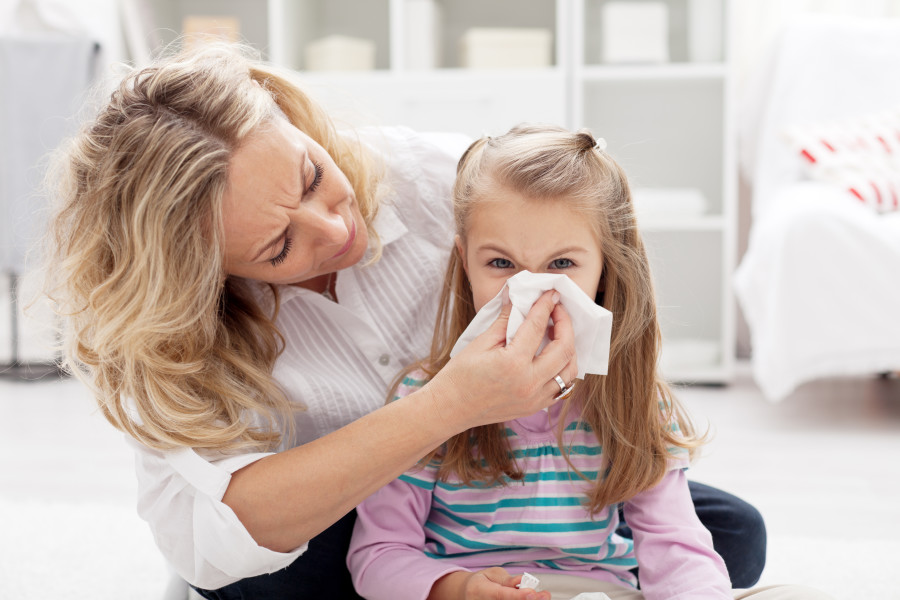Imagine a birthday party without cake or ice-cream. As a child, my severe food allergies – cow’s milk, eggs, and fish – required specially-prepared foods for every social occasion. Over time, I outgrew most of my food allergies, except for fish. As a teenager, I requested a chicken fillet sandwich from the school cafeteria and was accidentally given a fish fillet sandwich. After the first bite, I knew that I was in trouble. My throat began to close and I could feel the food moving through my body. An hour later, my blood pressure dropped to only my vital organs, I passed out, and I needed to be revived with a shot of epinephrine by a nurse. My fear from my anaphylactic (a severe allergic reaction) episode now extends to my young daughter. We discovered when Grace was just a baby that she is also highly allergic to many foods.
Food Allergies in U.S. Children
Childhood food allergies are on the rise in the United States with no effective treatment in sight. The U.S. Centers for Disease Control and Prevention (CDC) states that, “food allergies have increased by 50% in children from 1997 to 2011.” Presently, the only way for parents in the United States to manage a child’s food allergy is to keep the child away from the food and to have emergency medication available in case of accidental exposure. I discovered while living in Spain that in many countries novel food allergy treatments for children are clinically available.
Immunotherapy to Treat Food Allergies
New allergy desensitization treatments – oral immunotherapy (OIT) and sublingual immunotherapy (SLIT)—may offer protection from life-threatening anaphylactic reactions for the nearly 6 million U.S. children with food allergies. For both OIT and SLIT, the patient receives a gradually increased dose of the offending food, until he/she is able to eat the food without an allergic reaction. Oral immunotherapy protocol dictates swallowing the offending food, whereas, with SLIT, the food is held under the tongue for a few minutes before spitting it out or swallowing it. Oral immunotherapy is currently preferred to sublingual immunotherapy for treating food allergies, because after the full SLIT treatment, children are unable to eat a normal-size food portion. “SLIT is a safe protocol, but unlike OIT, SLIT doses are small and never reach that of a standard food ration, such as an entire egg or a glass of milk,” explains Dr. Pedro Ojeda, head allergist at the Ojeda Clinic in Madrid along with his sister, Dr. Isabel Ojeda.
Immunotherapy Phases
Food immunotherapy to treat childhood food allergies consists of three phases— the initial phase, the build-up phase, and the maintenance phase. In the initial phase, a child usually receives a small, drop-size amount of the food. During the build-up phase, the food-dose is increased over days to weeks until a maintenance dose is reached, which may take several months. The maintenance phase then continues for months to years. “Many parents have the misconception that after immunotherapy, the child is cured from the food allergy, which is false,” insists Dr. Ojeda. “During the process, the child’s immune system slowly tolerates a certain amount of food; however, to maintain that level of tolerance, the child must continue to eat the food at least 3 to 4 times a week for several years and possibly for life.”
Immunotherapy in Spain vs. the United States
Immunotherapy with OIT is commonly used in allergy clinics in Spain, but in the United States, OIT is still under investigation. “In Spain, once a clinical trial is proven safe and effective by a hospital ethics committee, the treatment protocol can move into clinical practice,” states Dr. Ojeda, “unlike in the U.S. in which the Food and Drug Administration (FDA) regulations require several clinical study phases before approving such treatments.” Dr. Ojeda’s clinical group was the first in Spain to use OIT in a severely peanut-allergic child. When the child began the study, he had stomach pain, nausea, and vomiting 20 minutes after eating the peanuts. After OIT for several months, the child was able to eat 7 peanuts without an allergic reaction.
Part 2 of this blog continues with Grace’s story and more information on immunotherapy to treat childhood food allergies here.

